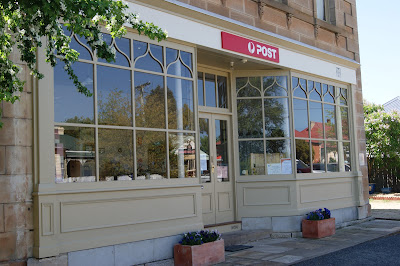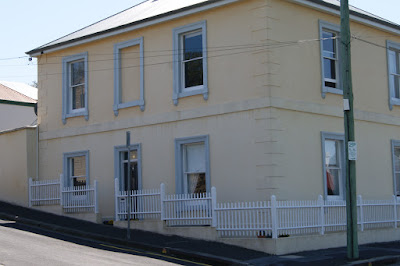At least as early as 1828, a military station was established at Green Ponds as part of Governor Arthur’s chain of military posts to protect European settlers from the increasingly hostile Tasmanian Aboriginal tribes. Also it is very probable that a road station was established at Green Ponds around the same time while Major Bell was completing his line of road from Hobart to St Peters Pass (the fore runner to the old Hobart – Launceston highway).
By 1837, the Constitution Hill road gang had arrived in Green Ponds and set up on the site of what became the Green Ponds Probation Station. The stone cottage on the right of the existing current day buildings dates from this time and was originally the Superintendents Cottage.
Road parties were part of Governor Arthur’s system of graduated punishments for misbehaving convicts. If convicted of a moderately serious offence (such as repeated insolence or drinking) the offender would be sent to a road party for up to 12 months to be put to hard labour building the roads. The work was very demanding physically and living conditions were often very poor. At Green Ponds the convicts huts had no fireplaces leading to outbreaks of fever during winter. Food was often scarce or misappropriated by the overseers. In 1837 for example several road station convicts were convicted of breaking out at night and stealing vegetables from neighboring gardens.


The most famous convicts to be housed at the Green Ponds station were the men known as the “Canadian Rebels”. These men, who were actually mostly Americans, had been sentenced to transportation following an unsuccessful uprising against the British in Canada. By this time, the probation system was in effect and the Canadians were sent to a series of probation stations ending up at Green Ponds in September 1840. Many of the Canadians kept journals, thanks to which we have descriptions of conditions at this station. As well as the usual activities of quarrying and breaking stone for roadmaking, some of the more highly skilled Rebels helped with the construction of the Kempton Bridge and St Mary’s Church.


The Green Ponds Probation Station closed down in 1841, after which the site became the headquarters of the Green Ponds Police. A Court House was set up in the old Superintendants Cottage and in 1848 a large Watch House (District Gaol) was built on the site to the left of the Superintendant’s Cottage, part of which, the original men’s cells, can still be seen today. In 1880, the Green Ponds Municipality paid over 300 pounds to build the middle section as its new council chambers which are still used to this day.
Main Text & Information Source –
Interpretation Signs at the site.



















































